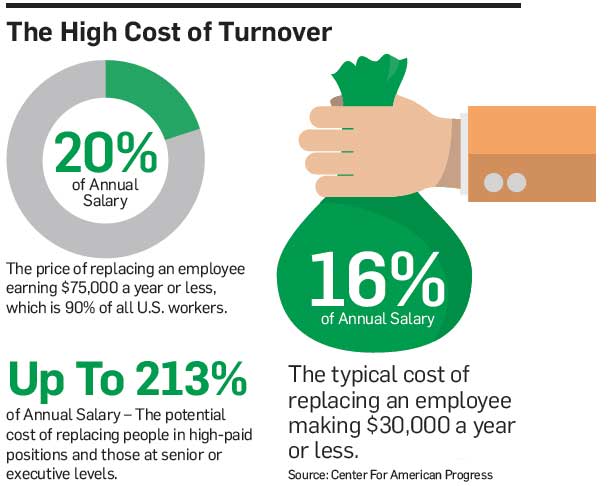September 09, 2016
How to Capitalize on Consumer Incentives and Employee Loyalty Programs
Two case studies show how distributors can capitalize on consumer incentives and employee loyalty programs.
Looking for a market to target that is sure to help increase your business? Think incentives and corporate gift programs.

A new survey by the Incentive Federation has found that 84% of businesses in the United States participate annually in non-cash incentives like award points, gift cards, travel and merchandise, spending a total of $90 billion. The Incentive Marketplace Estimate Research Study found that the non-cash incentives sector increased by 17% in three years, since the last market estimate report in 2013.
“This study reaffirms that the use of non-cash incentives has been and continues to be an important part of many businesses’ growth strategies,” said Melissa Van Dyke, co-chair of the Incentive Federation and president of The Incentive Research Foundation. “The growth in the use of non-cash incentives is an important signal that U.S. businesses value tangible incentives over simply using cash to recognize performance and loyalty.”
Here are two case studies that show exactly how promotional products distributors are able to grow their companies by running incentive programs for their clients.
Keep People Committed
A program that incentivizes drug trial participants to complete testing has been a huge success for a Florida distributorship.
Robert Stillman has orchestrated a wide array of incentive programs. But perhaps the most unique program he executes is one that helps prevent a pharmaceutical client from losing hundreds of millions of dollars. “It’s an outside-the-box initiative that has been a win-win for us and our client,” says Stillman, CEO of Far From Boring, a Boca Raton, FL-based distributorship.
The program’s purpose is to ensure that people who participate in drug trials remain committed for the duration of the study periods. Pharmaceutical companies often invest hundreds of millions of dollars in trials to help get their new drugs approved for sale by the Food & Drug Administration. However, it’s common for study participants to drop out of the test before it’s completed, as the trials can sometimes take several years, says Stillman. If not enough people complete the testing, then the whole trial can be scrapped, resulting in a loss for the pharmaceutical company.
To prevent such a disaster scenario for his pharmaceutical client, Stillman started an incentive program in which drug trial participants receive branded gifts every three months during the test period. So far, he has implemented the program during two test trials – both to resoundingly successful results.
“The individuals running the studies have been absolutely thrilled with the amount of participants who have stayed enrolled in the FDA trials,” says Stillman, noting both trials are in the final stages, having run for 20 months and 28 months as of spring 2016. “The participants were shown appreciation, and they returned it in kind with commitment.”
An essential ingredient in the program’s success is that Stillman and his team have propelled it with branded products that would appeal to the needs and tastes of study participants, which included middle-aged women with particular health histories. “For the program to succeed,” says Stillman, “it has to be based on who the test subjects are and what they would like to receive.”
Products have included everything from a plush throw for sitting rooms to iPad/tablet holders that make it easy to use such devices when sitting or lying down. “In terms of sales,” says Stillman, “we’ve done in the mid-six figures so far.”
And that just might be the tip of the iceberg.
Impressed with the results, the client is staying loyal to Stillman. Word-of-mouth praise for Far From Boring’s campaigns has now spread to other pharmaceutical companies. “Friends tell friends and we get referrals,” says Stillman. “We’ve gotten calls from larger and smaller pharmaceutical companies that want us to put a program together for them.”
Generate Loyalty From Workers
Help clients keep employees for the long haul with an incentive program that rewards longevity.
Losing good employees costs companies time, money and efficiency. Naturally, smart organizations strive to keep quality personnel on their payrolls – an effort promotional product professionals can propel with incentive programs that reward workers for staying around.
Quick Tip: Make It Better
If prospects already use incentives, ask questions that allow you to discover what about the program they’d like to change to make it more effective. Then, get creative and come up with solutions that achieve those aims.
Linda Hershey hasn’t missed the chance to capitalize on the opportunity. The owner of Proforma LLH Promos (asi/490810) has created an effective incentive program for a corporation that owns and/or manages about 50 hotels.
Through the program, employees order branded merchandise from an e-store when they hit longevity milestones at five-year intervals. Once a month, the individual orders are aggregated and fulfilled, providing Hershey with a steady source of recurring sales. As another component of the program, Hershey annually provides service pins that recognize employees for their years of dedication to the company. The pins feature the corporation’s logo and the number of years the individual has worked for the hospitality industry firm. “We’ve been running the program for about seven years now,” says Hershey.
A key to the program’s success is that Hershey ensures the e-store is stocked with items that employees will truly value. Primarily, these products consist of retail-style apparel, including high-quality shirts from Cutter & Buck (asi/47965) and fleece pieces from SanMar (asi/84863). The lineup of orderable merchandise, which also includes products like computer bags, routinely evolves. “I meet with the client to update the store with items that their employees are going to want,” says Hershey.
The online ordering aspect of the program proved an important factor in helping Hershey earn the business – and in helping her maintain it. While the company had an incentive initiative prior to working with Hershey, the program did not include a web store. By being able to provide the online platform, Hershey streamlined the program, making things easier for her client. “It has been a really good system for them,” says Hershey. “The employees like how easy it is to use – and that the corporation cares about them and wants to recognize them for their service."
